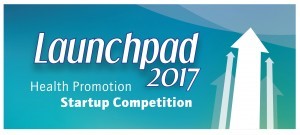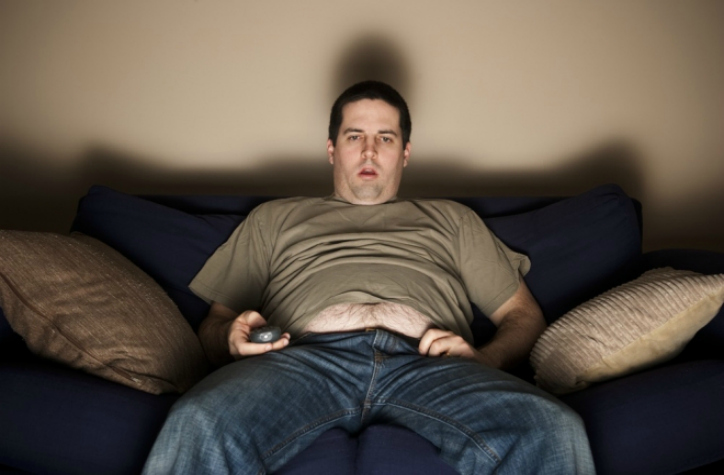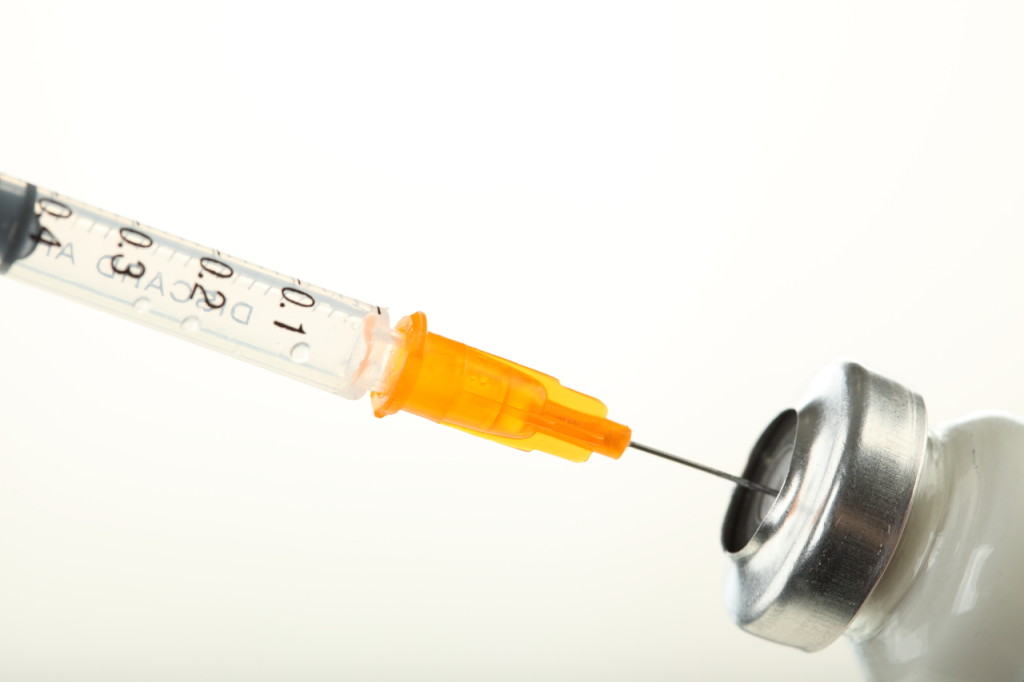Low and High hematocrit increase cardiovascular risk for Testosterone patients
Hematocrit is the percentage of red blood cells in the blood. High hematocrit levels can increase the risk of cardiovascular disease, while low hematocrit levels can lead to anemia and other health problems. Testosterone replacement therapy (TRT) can affect hematocrit levels in some men. In this blog, we will explore how low and high hematocrit increase cardiovascular risk and how TRT can impact hematocrit levels.High Hematocrit increase Cardiovascular Risk
High hematocrit levels can increase the risk of cardiovascular disease, particularly in men. The excess red blood cells in the blood can cause the blood to become thicker and more viscous, making it more difficult for the heart to pump blood throughout the body. This can lead to an increased risk of heart attack, stroke, and other cardiovascular problems. Some of the factors that can contribute to high hematocrit levels include:- Dehydration: Dehydration can cause hematocrit levels to increase.
- Smoking: Smoking can increase hematocrit levels.
- Altitude: Living at high altitudes can cause hematocrit levels to increase as the body tries to adapt to lower oxygen levels.
- Genetic conditions: Some genetic conditions, such as polycythemia vera, can cause hematocrit levels to increase.
Low Hematocrit and Anemia
Low hematocrit levels can lead to anemia, a condition where there are not enough red blood cells in the blood. Anemia can cause symptoms such as fatigue, weakness, and shortness of breath. It can also increase the risk of complications during surgery and childbirth. Some of the factors that can contribute to low hematocrit levels include:- Iron deficiency: Iron is essential for the production of red blood cells, and a deficiency can lead to anemia.
- Vitamin deficiency: Vitamins such as B12 and folate are also essential for red blood cell production.
- Chronic kidney disease: Chronic kidney disease can lead to a decrease in the production of red blood cells.
- Chronic diseases: Chronic diseases such as cancer and HIV/AIDS can lead to anemia.
TRT and Hematocrit Levels
TRT can impact hematocrit levels in some men. Testosterone stimulates the production of red blood cells in the bone marrow, which can lead to an increase in hematocrit levels. However, not all men will experience an increase in hematocrit levels with TRT, and some may even experience a decrease. It is important for men receiving TRT to have their hematocrit levels monitored regularly to ensure that they are not at an increased risk for cardiovascular disease. If hematocrit levels become too high, TRT may need to be adjusted or discontinued to reduce the risk of cardiovascular problems.Lance Armstrong and elite cyclists using EPO to increase Hematocrit
Lance and other elite cyclists allegedly used EPO to increase their hematocrit levels to increase oxygen carried around their body and improve endurance and recovery. These cyclists also have incredibly developed hearts that could operate efficiently at higher Hct levels. Cyclists risks are different than men in their 40s and 50s trying to get back into shape and experiencing TRT related higher HCT and thicker blood.How TRT patients and clinicians can monitor and manage Hematocrit levels
We generally feel that <51 Hct levels is a green light, 51-54 is a yellow light and 54+ a red light. Not only are the levels important but if the levels are increasing and at what rate. If hematocrit levels are raising or elevated the best ways to manage them are:- Increase hydration and water consumption. We recommend never going into a test hydrated as the tests may result in a false positive and require actions to return to safer levels.
- Grapefruit and grapefruit seed extract help lower hematocrit.
- Donate blood. Donating a pint of blood can lower Hct 1-3% points. A double red blood cell or ‘Power Red’ donation can lower it further.
- Therapeutic phlebotomies are also donating blood. Many advanced blood centers have machines that strap your arm and run blood through it strip out red blood cells to a specific target Hct level around 42-43%. Blood donations can only happen so frequently and the therapeutics phlebotomy can reduce them dramatically.
Conclusion
Hematocrit levels can impact cardiovascular risk and overall health. High hematocrit levels can increase the risk of cardiovascular disease, while low hematocrit levels can lead to anemia and other health problems. TRT can impact hematocrit levels in some men, and it is important for men receiving TRT to have their hematocrit levels monitored regularly to ensure that they are not at an increased risk for negative cardiovascular events. By understanding the relationship between hematocrit and cardiovascular risk, men can make informed decisions about their health and wellbeing and improved conversations with their care team.Low and High hematocrit increase cardiovascular risk for Testosterone patients
sa_admin March 21st, 2023
Posted In: Uncategorized
Army vets Low T risks and benefits from Testosterone therapy
Low testosterone (Low T) is a common condition that affects men, and army veterans are at an increased risk for this condition. Army Vets Low T risks can cause a variety of symptoms, including fatigue, decreased libido, and decreased muscle mass. Testosterone replacement therapy (TRT) is a treatment option for men with Low T, and it has been shown to be effective in improving symptoms and overall quality of life. In this blog, we will explore why army veterans are at risk for Low T and how TRT can help improve their health and wellbeing.Why Army Vets Low T Risks lead to Testosterone Therapy consideration
Army veterans are at an increased risk for Low T due to a variety of factors. One of the main reasons is exposure to stress and trauma during combat. The stress and trauma of combat can affect the hypothalamic-pituitary-gonadal (HPG) axis, which regulates the production of testosterone in the body. When the HPG axis is disrupted, it can lead to decreased testosterone levels. In addition to stress and trauma, other factors that can contribute to Low T in army veterans include:- Age: As men age, their testosterone levels naturally decrease peaking at 19 and declining 1-2% in the best of conditions. Army veterans who are older may have accelerated their decline through stressful service.
- Injuries: Army veterans who have suffered injuries, particularly to the testicles or TBI (traumatic brain injury), may experience decreased testosterone production.
- Medications: Certain medications, such as opioids and steroids, can decrease testosterone production.
- Obesity: Obesity is a risk factor for Low T, and many army veterans struggle with weight gain after leaving the military.
- Sleep apnea: Sleep apnea is common among army veterans, and it has been linked to decreased testosterone production.
Symptoms of Low T in Army Veterans
The symptoms of Low T in army veterans can vary depending on the severity of the condition. Some common Low T symptoms include that patients on TRT programs see improvements in:- Fatigue: Low T can cause fatigue and a lack of energy.
- Decreased libido: Army veterans with Low T may experience a decrease in sex drive.
- Decreased muscle mass: Low T can cause a loss of muscle mass and strength.
- Weight gain: Low T can cause weight gain, particularly around the midsection.
- Mood changes: Low T can cause mood swings, irritability, and depression.
- Erectile dysfunction: Low T can contribute to erectile dysfunction.
Benefits of Testosterone Replacement Therapy
TRT can be an effective treatment option for army veterans with Low T. Some of the potential benefits of TRT include:- Increased energy: TRT can help boost energy levels, reducing fatigue and improving overall quality of life.
- Improved libido: TRT can help increase sex drive and improve sexual function.
- Increased muscle mass: TRT can help increase muscle mass and strength.
- Weight loss: TRT can help promote weight loss, particularly around the midsection.
- Improved mood: TRT can help improve mood and reduce symptoms of depression and irritability.
- Improved bone density: TRT can help increase bone density, reducing the risk of osteoporosis.
Risks and Side Effects of Testosterone Replacement Therapy
While TRT can be an effective treatment option, it is not without risks and side effects. Some potential risks and side effects include:- Increased risk of blood clots: TRT can increase the risk of blood clots, which can be dangerous. Make sure your provider tests for and reviews Hematocrit levels.
- Acne: TRT can cause acne and other skin reactions.
- Breast tissue growth: TRT can cause breast tissue to grow in some men if Estradiol levels and the ratio of Total Testosterone : Estradiol is left un checked and not managed.
- Sleep apnea: TRT can worsen sleep apnea in some men
Army vets Low T risks and benefits from Testosterone therapy
sa_admin March 21st, 2023
Posted In: Uncategorized
Tags: benefits of testosterone, benefits to your body, depression, erectile dysfunction, fatigue, hormone replacement therapy, low t, testosterone levels, testosterone therapy
Does Low Testosterone Treatment cause Hair Loss?
When men look into reversing Low T, they often ask, does Low testosterone treatment cause hair loss? This is a great and important question. For starters, testosterone is a male hormone responsible for the development of male physical characteristics such as body hair, muscle mass, and deep voice. It is also essential for sperm production and sexual function. However, as men age, their testosterone levels decrease, leading to a condition known as low testosterone or low T. Low T can cause various symptoms such as decreased libido, fatigue, and hair loss. In this blog, we will discuss the relationship between testosterone treatment and hair loss, why men with low T go bald, what happens when they start testosterone treatment, and what men can do to combat hair loss.So, Does Testosterone Treatment Cause Hair Loss?
One of the most common concerns of men with low T is balding. The good news is that testosterone replacement therapy (TRT) is unlikely to cause hair loss. In fact, studies have shown that TRT may help prevent hair loss and even promote hair growth in men with androgenetic alopecia (male pattern baldness). Male pattern baldness is a genetic condition that causes hair loss on the scalp, and it is primarily caused by the hormone dihydrotestosterone (DHT). DHT is a derivative of testosterone that binds to hair follicles, causing them to shrink and eventually stop producing hair. TRT can actually reduce the production of DHT by converting it into a less harmful form. Therefore, TRT can at times be beneficial for men with male pattern baldness. However, TRT can cause hair loss in men who are not predisposed to male pattern baldness. This type of hair loss is called telogen effluvium, which is caused by an interruption in the hair growth cycle. TRT can cause a shift in the hair growth cycle, leading to increased shedding of hair. This type of hair loss is usually temporary and resolves once the body adjusts to the new hormone levels.Why Do Men with Low T Go Bald?
As mentioned earlier, male pattern baldness is primarily caused by the hormone DHT, which is a derivative of testosterone. However, the relationship between low T and male pattern baldness is complex. Low T does not cause male pattern baldness directly, but it can accelerate the process in men who are genetically predisposed to it. Low T can cause a decrease in hair density, which is the number of hairs per square centimeter of the scalp. This is because testosterone is necessary for hair growth and maintenance. When testosterone levels decrease, hair growth slows down, and hair follicles shrink, leading to thinning hair. Low T can also cause an increase in body fat, which can contribute to hair loss. Fat cells convert testosterone into estrogen, which can interfere with hair growth. Additionally, excess body fat can cause inflammation, which can damage hair follicles.What Happens When Men with Low T Start Testosterone Treatment?
When men with low T start TRT, they may experience various changes in their body, including their hair. TRT can cause an increase in body and facial hair growth, which is a desirable effect for many men. However, it may also cause an increase in hair shedding, especially during the first few months of treatment. As mentioned earlier, TRT can cause a shift in the hair growth cycle, leading to increased shedding of hair. This type of hair loss is usually temporary and resolves once the body adjusts to the new hormone levels. However, some men may experience persistent hair loss, which may require further evaluation. Men who are genetically predisposed to male pattern baldness may experience an acceleration of the process when they start TRT. This is because TRT can increase the production of DHT, which can shrink hair follicles and cause balding. However, as mentioned earlier, TRT can also reduce the production of DHT by converting it into a less harmful form.There are several things that men can do to combat hair loss when on testosterone replacement therapy (TRT):
- Use hair loss prevention products: There are many hair loss prevention products available in the market, such as minoxidil and finasteride. These products can help slow down or even stop hair loss.
- Eat a healthy diet: A diet rich in vitamins and minerals, particularly biotin, zinc, and iron, can promote healthy hair growth. Men should aim to include plenty of fruits, vegetables, lean protein, and whole grains in their diet.
- Manage stress: Stress can contribute to hair loss, so men should try to manage their stress levels through exercise, meditation, or other relaxation techniques.
- Avoid smoking and excessive alcohol consumption: Smoking and excessive alcohol consumption can damage hair follicles and contribute to hair loss.
- Use a gentle shampoo: Using a gentle shampoo can help prevent hair breakage and damage. Men should avoid shampoos that contain harsh chemicals or sulfates, which can strip the hair of its natural oils.
- Get regular check-ups: Men should get regular check-ups with their doctor to monitor their hormone levels and ensure that their TRT is not causing any adverse effects.
Does Low Testosterone Treatment cause Hair Loss?
sa_admin March 8th, 2023
Posted In: Low T Info
Tags: alopecia, androgenetic alopecia, bald, DHT, dihydrotestosterone, estrogen, finasteride, hair loss, low t, male pattern baldness, minoxidil, telogen effluvium, testosterone
What are the differences of Total Testosterone and Free Testosterone and which is more important?
What are the differences of Total Testosterone and Free Testosterone? Testosterone is an essential hormone that is responsible for the development of male characteristics such as muscle mass, bone density, and sex drive. There are two types of testosterone that circulate in the bloodstream: Total Testosterone and Free Testosterone. Total Testosterone refers to the overall amount of testosterone that is present in the blood, including both the testosterone that is bound to proteins in the blood and the testosterone that is unbound, or “free.” Free Testosterone is the testosterone that is not bound to proteins and is available for the body to use. While both Total Testosterone and Free Testosterone are important, there are some key differences between the two and which one is more important depends on the specific situation.What is Total Testosterone?
Total Testosterone is the sum of both the bound and unbound testosterone in the bloodstream. The majority of testosterone in the blood is bound to two proteins: sex hormone-binding globulin (SHBG) and albumin. SHBG binds to the majority of testosterone in the blood, while albumin binds to a smaller amount. Total Testosterone levels can be affected by a variety of factors, including age, obesity, and medical conditions such as diabetes or liver disease. Total Testosterone peaks at age 19 and levels decline about 1-2% per year for the rest of even the healthiest men’s lives. Father time is undefeated!! We actually have about 1/2 the testosterone levels our grandfathers did at the same age due to many exogenous factors we are exposed to like chemicals, insecticides, less nutrient foods, hormones in beefs, etc. etc. etc.What is Free Testosterone?
Free Testosterone is the amount of testosterone that is unbound and available for the body to use. This form of testosterone is more potent and has a greater impact on the body than bound testosterone as it more directly relates to the symptoms of Low T men experience. Free Testosterone levels can also be affected by a variety of factors, including age, obesity, and medical conditions such as diabetes or liver disease.Which are the differences of Total Testosterone and Free Testosterone and which is more important?
The importance of Total Testosterone vs. Free Testosterone depends on the specific situation. For example, when evaluating a man for hypogonadism, Total Testosterone levels are typically measured and that is a major red flag that the medical provider does not understand how to evaluate and care for Low Testosterone. Low Total Testosterone levels may indicate a diagnosis of hypogonadism, which can be treated with testosterone replacement therapy. However, if a man has low Total Testosterone levels, it is also important to measure Free Testosterone levels to determine the severity of the deficiency. Free Testosterone levels are more indicative of the actual amount of testosterone that is available for the body to use. It is also important if the Total Testosterone and Free Testosterone levels are not moving correlatively and say different things where one is high and one is low. In general, both Total Testosterone and Free Testosterone are important for maintaining overall health and well-being. Low levels of either form of testosterone can lead to a variety of symptoms, including decreased sex drive, decreased muscle mass, and decreased bone density. The Bottom Line Total Testosterone and Free Testosterone are both important forms of testosterone that circulate in the bloodstream. While Total Testosterone levels are typically used to diagnose hypogonadism, Free Testosterone levels are more indicative of the actual amount of testosterone that is available for the body to use. Ultimately, the importance of Total Testosterone vs. Free Testosterone depends on the specific situation and what is being evaluated. It is important for men to work with their healthcare providers to evaluate both Total and Free testosterone levels, PSA levels and baseline hematocrit and estradiol levels and determine the best course of treatment if necessary.What are the differences of Total Testosterone and Free Testosterone and which is more important?
sa_admin March 6th, 2023
Posted In: Low T Info
How long do Testosterone Benefits take to show effects?
How long do Testosterone Benefits take to show effects? Testosterone replacement therapy (TRT) is a medical treatment designed to alleviate the symptoms of low testosterone, a condition known as hypogonadism or andropause. As men age, their testosterone levels naturally decline, leading to a decrease in energy, muscle mass, and sex drive. Low testosterone can also cause mood swings, depression, and decreased bone density. In some cases, the cause of low testosterone is due to a medical condition, such as a pituitary gland disorder or injury to the testicles. The therapy supplements the testosterone that the body is no longer producing at optimal levels, helping to restore healthy levels and alleviate symptoms. While TRT can be an effective treatment for low testosterone, many men wonder how long it will take for them to feel and experience the specific benefits of the therapy. The benefits of TRT can vary from person to person but here is an overview of how it often improves lives. The speed of onset can depend on the form of testosterone being used, with injections typically being the fastest-acting form.How long do Testosterone Benefits take to show effects?
Testosterone Time till Onset Here’s a review and look at the specific symptoms and benefits of TRT and how long it typically takes for men to feel and experience them:Increased energy and vitality from testosterone
One of the most common symptoms of low testosterone is a decrease in energy and vitality. Many men report feeling tired, sluggish, and lacking motivation. TRT can help to restore healthy testosterone levels and increase energy and vitality. The timeline for experiencing increased energy and vitality from TRT can vary. Some men may begin to feel more energetic within a few days of starting the therapy, while others may not notice a change for several weeks or even months.Improved muscle mass and strength from testosterone
Testosterone is essential for building and maintaining muscle mass and strength. Low testosterone levels can lead to a decrease in muscle mass and a decrease in overall strength. TRT can help to restore healthy testosterone levels and improve muscle mass and strength. Some men may begin to see to see changes in fat mass, lean body mass and muscle strength occur within 12-16 weeks of testosterone therapy, stabilize at 6-12 months, but marginally continue to improve over years.Enhanced sex drive, libido and performance from testosterone
Testosterone plays a key role in sexual function and libido. Low testosterone levels can cause a decrease in sex drive and erectile dysfunction. TRT can help to restore healthy testosterone levels and improve sexual function and libido. Morning erections can start occurring in the first week of testosterone therapy. The timeline for experiencing enhanced sex drive and performance from TRT can vary. Some men may notice an improvement in sexual function and libido within a few weeks of starting the therapy, while others may take several months to see a noticeable change. The speed of onset can depend on the form of testosterone being used, with injections typically being the fastest-acting form.Improved mood and reduced depression from testosterone
Low testosterone levels can cause mood swings and depression. TRT can help to restore healthy testosterone levels and improve mood and reduce depression. The timeline for experiencing improved mood and reduced depression from TRT can vary. Some men may notice a improvement in mood and a decrease in depression within a 3-6 weeks of starting the therapy, while others may take several months to see a noticeable change.Increased bone density from testosterone
Testosterone plays a key role in maintaining healthy bones. Low testosterone levels can lead to decreased bone density and increasing T levels boost bone density which is so important to healthy aging and reduced risk form falls. This benefit takes longer of around 6 months of testosterone therapy to see benefits and can continue for three years. Insulin sensitivity from testosterone can improve in patients within a few days. The effects on glycemic control can become evident in 3-12 months. Reduction on inflammation from testosterone can occur within 3 to 12 weeks.How long do Testosterone Benefits take to show effects?
sa_admin March 4th, 2023
Posted In: Low T Info
Hormone Therapeutics wins Health and Employee Wellness Startup competition
Hormone Therapeutics, a telemedicine company using comprehensive testing for personal and employee health optimization, won the Launchpad Innovative Health Startup competition for employee wellness at the national Art and Science Health Promotional Conference.

Hormone Therapeutics Launchpad Victory Photo – Hunter Howard, Mike Motta, Mark Correia, Margaret Moore, John Harris, Michael ODonnell, Mary Gillis, James Hummer
Link to D CEO Healthcare article on Hormone Therapeutics Launchpad win
Launchpad Health and Employee Wellness Innovative Startup competition
The 27th annual conference was held at the Broadmoor Hotel in Colorado Springs, CO, with 1,500 healthcare professionals in attendance. Since 1989, the Art and Science Health Promotional Conference has aimed to narrow the gap between research and practice by “stimulating dialogue and engendering lasting relationship between practitioners and scientists.” The startup competition is held each year to promote recognize innovative health and wellness companies. Five finalists were selected to present to the audience and judges for the final stage of the competition.
“Winning this innovative healthcare startup competition was exciting to validate our strategy around a brand new approach to employee wellness and performance,” said Hormone Therapeutics CEO Hunter Howard. Our platform provides access to world-class testing, and physicians, in the home or office to optimize employee health and drive corporate performance. We launched a little over a year ago with a direct to consumer telemedicine model around the Hormone Replacement Therapy service line and kept adding service lines. We provide remote testing and can now send a nurse to any home, or office, in the country for genetic DNA testing, personalized food nutrigenomics, exercise physiology, blood, saliva, biome, telomere tests. We call this our 360 degree Health and Personal Optimization platform allowing us to expand to employee and concierge wellness.
Extending C-Suite Employee Wellness to entire company
Hormone Therapeutics highlighted an innovated approach to Employee Wellness extending the level of care previously only extended to the C-Suite throughout the organization. The Hormone Therapeutics team illustrated how corporations are spending $5,000 to $25,000 per executive per year sending C-level executives to wellness destinations boutiques like the Mayo, Cooper and Cleveland Clinics for annual two day checkups. These intensive programs give a great snapshot of the executives health on that day and then they are sent home with a list of items to work on and seen again the next year. The judges commented that the remote monitoring for personalized health and performance optimization could really change how we view employee wellness strategies.

The Hormone Therapeutics approach takes all of the same tests as the world-renowned organizations except for on-site MRI, cardiac stress and VO2 max and brings the rest to the corporation or even employee home for a fraction of the cost. The cost savings allows companies to extend this executive wellness plan throughout the organization. As important, Hormone Therapeutics national network of telemedicine physicians and lifestyle coaches work with the employees throughout the year with quarterly quantitative tests and goals and qualitative self evaluations rather than a one annual health snapshot.
Winning this innovative healthcare startup competition was exciting to validate our strategy around a brand new approach to employee wellness and performance. Our platform provides access to world-class testing, and physicians, in the home or office to optimize employee health and drive corporate performance. We launched a little over a year ago with a direct to consumer telemedicine model around the Hormone Replacement Therapy service line and kept adding service lines. We provide remote testing and can now send a nurse to any home, or office, in the country for genetic DNA testing, personalized food nutrigenomics, exercise physiology, blood, saliva, biome, telomere tests. We call this our 360 degree Health and Personal Optimization platform which allowed us to expand beyond individuals to employers.
Hormone Therapeutics wins Health and Employee Wellness Startup competition
Saleamp Design May 2nd, 2017
Posted In: Health & Wellness, Telemedicine
Healthcare Execs invited to Capitol Hill to discuss the AHCA

45 Healthcare Execs invited to Capitol Hill to discuss the AHCA
President Trump and the Republicans have run on Repeal and Replace since 2010 but have not been able to coalesce around what ‘replacement’ should look like. I was offered a front row seat, with 45 other Healthcare execs invited to Capitol Hill last week, to meet with Republican Congressmen and discuss the AHCA. The Freedom Caucus stood firm as a single unit, arguing the American Health Care Act was ‘Obamacare lite’ and a new entitlement program swapping ACA subsidies for tax credits. They sought to repeal the entire insurance regulation infrastructure rather than amend or vote for anything that resembles Obamacare.
Our group was comprised of YPO/WPO President’s leading healthcare companies. We met with Senators Rand Paul (KY) and Bill Cassidy (LA) and Congressmen Chris Collins (NY), Diane Black (TN), Tim Murphy (PA) and Pat Tiberi (OH). We had a robust give and take on the policies that affected our companies and were impressed with the passion, detailed and wonky knowledge these congressmen had on the legislative and business details of the act.

Senator Rand Paul, Hunter Howard and Jill Schweiter
The meeting was put together in November following the election to bring together a group of healthcare executives to discuss an ACA repeal. In the end, our input was too late to impact the bill as the White House had simultaneously issued an ultimatum to Republicans to get in line and vote for the bill or suffer the consequences in the mid-term elections. What happens next, given the campaign promises, should be interesting as House Speaker, Paul Ryan stated, “Obamacare is the law of the land. We’re going to be living with Obamacare for the foreseeable future.”
President Trump
President Trump was applauded for his out spoken support, but there are no convincing stories or quotes around his interest in the elements of the AHCA. It likely hurt his ability to appeal to undecided voters with his lack of detailed knowledge or passionate pushing for meaningful bill specifics.
Trump’s greatest skill may be as a marketer and brander as seen in his real estate deals and knack for labeling competitors. When many attempted to call the bill ‘Trumpcare’, the White House ran from it at the suggestion of VP Mike Pence. He did not share the same intensity, or tweets, as on the travel ban or wiretapping claims. Trump did voice his displeasure Sunday morning tweeting, “Democrats are smiling in D.C. that the Freedom Caucus, with the help of Club for Growth and Heritage, have saved Planned Parenthood & Ocare!”
Republicans agreed on Repeal only
No notable US Healthcare experts supported the specifics of the AHCA or could show how this program would benefit Americans. A Quinnipiac poll showed only 17% of Americans supported it. High-profile, conservative lawmakers called it ‘Obamacare Lite’ and many major medical and health care groups believed the bill would harm Americans. Moderate Republicans were alarmed by the Congressional Budget Office score projecting 24 million more uninsured and more so by the rising premiums for the low income 50-65 year olds and patients with pre-existing conditions. Ryan risked losing even more moderates with his 11th hour exploration of removing the 10 Essential Health Benefits of insurance programs guaranteeing preventative care in order to persuade the Freedom Caucus.
One issue from not getting any support from the other side of the aisle is it provides veto power to large conservative coalitions. This could hamper the White House from accomplishing its goals if it is unable to coalesce the moderate and conservative wings of the party in pushing through Tax Reform and the Infrastructure Bill. We never did get to a vote to see who was bluffing and who was going to fall in line. By one estimate, the conservative House Freedom Caucus had 22 potential no’s from their 30 member group. Thirteen of the 50 member Tuesday Morning group were undecided going into the vote. Nine of the 23 Republican congressmen in areas Hillary Clinton won in 2016 were potential no’s as were 9 Mavericks that do not always vote straight ticket and 6 other undecideds. These various groups held different and often opposing reasons for not supporting the AHCA.
Differences approaches between the ACA and AHCA
Prior to the 2008 election, democratic congressional leaders, interest groups and policy experts worked to develop a framework for the ACA and worked with the Presidential candidates. After the election, this group spent 15 months, over 187 legislative days, and the House and Senate held 15 hearings and accepted more than 150 Republican amendments. The Republican amendments, however, did not win a single Republican ACA vote when signed into law on March 23, 2007. Nancy Pelosi in the House and Harry Reid in the Senate, led the push after the Democrats learned from President Clinton’s failed attempt to push the bill from the White House. Last week we saw Paul Ryan and President Trump throw in the towel after just 18 days without reaching across the aisle.
Obamacare – 187 legislative days
Medicare Part D – 166
1996 Welfare Reform – 56
1986 Tax Reform – 323
American Healthcare Act – 17

TN Congresswoman Diane Black, Chairman of the House Budget Committee
Ryan had many options with his approach, however, the wings of his party hold vastly different ideologies on the government’s role in healthcare. He could have crafted a conservative bill with incremental changes consistent with Trump’s populist economic position. He could have proposed modest subsidy cuts on the needy, and smaller tax breaks for the wealthiest, and tried to accommodate both the Republican Governors relying on the ACA. Instead, the AHCA projected to increase the uninsured, reduce care in standard insurance, cut support to both low income Americans and those with serious health conditions, and provide a tax cut for the wealthy.
Essential Health Benefits and Single Payer
We heard, through the press while we were in our meetings, that repealing the Essential Health Benefits was one element on the table to secure the Freedom Caucus votes. The 10 EHB points are considered critical by the ACA authors to establish a standard of care that includes maternity and newborn care, preventative exams, prescription drugs, emergency services and hospitalizations. ACA opponents claim the government is reducing consumer choice and inflating insurance costs with services not everyone wants. I shared my concerns with eliminating the EHB provisions in creating more gaps in coverage Americans need.

NY Congressman Chris Collins
One consistent side conversation surrounded the benefits of a Single Payer system which really surprised me from a Republican group. One individual’s analysis showed that 31% of all healthcare costs go to either the insurance companies or revenue cycle mechanics on the provider side with little value to patient care for this expense. The group knew that single-payer is a political lightning rod for conservatives though. Given Trump’s fiscal conservatism and maverick qualities, do not be surprised if this path receives more consideration in the future.
What Replacement could look like: The Patient Freedom Act
One important ideological shift is that more and more Americans believe healthcare is a right the government should provide. Senator Bill Cassidy from Louisiana shared with us, as he has with others that, “There’s widespread recognition that the federal government, Congress, has created the right for every American to have healthcare.” Many of the conservative members of his party do not agree with this position.

LA Senator and Physician Bill Cassidy
Our conversation with Senator Cassidy focused on the AHCA, however, his Patient Freedom Act, co –authored with Susan Collins of Maine, is one structure the Republicans may pursue. This more moderate bill does not repeal Medicaid expansion and leaves states free to maintain the current ACA marketplace structure at 95% of current funding. It also gives states the option to expand government funded health savings accounts.
Moving on, for now
The Trump administration avoids getting stuck in the months of policy debate on the AHCA specifics. Passing the ACA was a major factor in the Democrats losing so many seats in the 2010 mid-term elections.
Nobody believes Obamacare is perfect, specifically those hurt by high insurance premiums, co-payments and deductibles. It will be interesting to see if the government uses the powers, interestingly granted to HHS Secretary Tom Price through the ACA, to make changes to the exchanges, Medicaid and provide subsidies to middle and low-income individuals. His actions can either support the insurance exchanges or accelerate their decline.
Hunter Howard has founded three HealthTech startups: Hormone Therapeutics, Ocracoke Health, and MediGain.
Hormone Therapeutics provides patients a scientific map to health optimization through precision in-home testing (blood, saliva, genetics, telomere, microbiome) and a national telemedicine platform allowing personalized therapeutics for health optimization. We empower and guide patients to live healthier longer.
Healthcare Execs invited to Capitol Hill to discuss the AHCA
Saleamp Design March 28th, 2017
Posted In: Uncategorized
9 Common Low Testosterone Symptom That Affects Your Body
 Are you experiencing any low testosterone symptom? Do you an idea how it affects your body? Testosterone is very important not only for revving up your sex drive but for muscle building too. But testosterone receptors circulate all over the body, from the bones to the blood vessels to your brain. Hence, you have deficiency on testosterone, the health effects could go beyond the bedroom and the gym.
Are you experiencing any low testosterone symptom? Do you an idea how it affects your body? Testosterone is very important not only for revving up your sex drive but for muscle building too. But testosterone receptors circulate all over the body, from the bones to the blood vessels to your brain. Hence, you have deficiency on testosterone, the health effects could go beyond the bedroom and the gym.
Below are the nine most common low testosterone symptoms but they are not solid proof of low T. To confirm, you will two blood tests that show low levels – often around 300 nanograms per decilitre or even lower, depending on the lab. Your doctor will provide an official diagnosis if you have low testosterone.
Fortunately, if low T is the true culprit, most of the low testosterone symptoms can be reversed, or at least alleviated, with testosterone therapy.
Low Testosterone Symptom #1: Your sex drive falters
Perhaps the quickest, most known and most common low testosterone symptom is disappearing libido. Nearly all patient who visits with suspected low T reports lack of sexual appetite and that includes masturbation. Aside from wanting less sexual contact, men with testosterone deficiency report fewer erotic dreams and fantasies.
Areas in the brain responsible for sexual activity, such as the amygdala, are filled with testosterone receptors. The hormone fits inside these receptors like a lock inside a key to light up and arouse you. Without the testosterone, you lose an important part of the puzzle.
The lack of sexual desire can lead to issues with erection, although low T does not directly affect the process involved in getting or keeping it stiff.
Low Testosterone Symptom #2: Your muscles shrink
Sufficient testosterone places your body in a muscle-building (anabolic) state by helping the body generate and process proteins that create the building blocks of lean mass. When the level of testosterone declines, the body shifts to catabolic state, breaking down muscle tissue instead of building it up.
Initially, you may notice that it’s harder to build muscle at the gym and lift as much weight. After a few weeks, you will notice that you’re losing muscle mass. In fact, a study on men with low free testosterone, which is measured by the amount of hormone available to attach to receptors – had a triple risk of losing muscles with aging compared to those with normal levels.
Low Testosterone Symptom #3: Your penis may shrink too
With the consistent supply of testosterone, the tissues of your scrotum, testicles and penis may shrivel or atrophy. When this happens, your penis could lose both girth and length. You will notice that your testes shrinks too, even to half the size and changes from firm to squishy.
While testosterone replacement therapy (TRT) cannot restore your testicular volume, it has a good chance of bringing back your penis to its former glory. In fact, a study published by the Indian Journal of Urology revealed that TRT in boys with micropenis can increase the size to one and half inch.
Low Testosterone Symptom #4: You gain more body fat
In a study among men with prostate cancer, it has been shown that about 22 percent more visceral fat and 14 percent more body fat were gained after a year of androgen deprivation therapy – a form of treatment which hinders testosterone’s effect as prostate cancer cells often require androgen such as testosterone, to grow.
Visceral fat is the deep abdominal fat which coats your organs, which increases the risk of heart disease and diabetes.
In men, low levels of testosterone support the activity of lipoprotein lipase, an enzyme that drives circulating lipids into visceral fat cells, increasing them up.
Low Testosterone Symptom #5: Your mental performance declines
One of the most common low testosterone symptom is trouble with memory and thinking. In a recent study, men with testosterone deficiency for more than five years also noticed a drop in scores on their memory and mental function test.
Aside from the amygdala, other parts of the brain responsible for attention and memory have testosterone receptors too, such as the cerebrum. When there is insufficient amount of hormone for those receptors, your brain cells won’t be able to perform optimally.
Low Testosterone Symptom #6: Your mood suffers
While some of the side effects of low T such as weight gain and sexual dysfunction can really turn you blue, there is an evidence of a direct link between testosterone deficiency and your mood.
Based on a study published by the Endocrine Journal, it has been revealed that about 23 percent of young men with recently diagnosed Low T met the criteria for depression. When there is inadequate level of testosterone, it leads to empty testosterone receptors which is associated to mood changes.
Furthermore, mood disorders such as anxiety and depression, can start a vicious cycle. Depression can even suppress your reproductive system to produce testosterone, which worsens the problem.
Low Testosterone Symptom #7: Your bones deteriorate
Our bone is a living tissue that are constantly tearing down and rebuilding themselves. However, when testosterone levels drop, the process of breaking down becomes much faster than the normal rate the body can rebuild it.
This results in a higher risk of developing osteoporosis and low bone density and suffering from fractures.
Low Testosterone Symptoms #8: Your heart may be at risk
The effect of testosterone deficiency on the possibility of developing heart problems has fueled controversy among experts.
On one side, low testosterone levels may be associated to heart problems. A study from the UK has found that men diagnosed with low testosterone has a higher risk of dying from heart disorder compared to men with normal levels. The theory is that testosterone can help open heart blood vessels, letting blood to flow without obstructions.
On the flip side, a number of studies have proposed that testosterone replacement therapy, particularly among seniors or those with existing heart ailments, might increase the likelihood of stroke or heart attack because they believe that TRT may thicken the blood, increasing the chances of clot formation.
Hence, if you decide to get testosterone therapy, be sure to talk to your doctor regarding the risks and benefits of the treatment. Your doctor will test your T levels after you started the therapy or make necessary changes to the dosage. If you are getting treatment by injection, be sure that your T levels are not rising too high.
9 Common Low Testosterone Symptom That Affects Your Body
Saleamp Design February 21st, 2017
Posted In: Testosterone Therapy
Testosterone Therapy for Military? Pentagon Considers Hormone to Boost Combat Performance

The Department of Defense has been studying testosterone therapy for military, finding out if it could keep the brain and muscles working optimally even during long periods of combat.
Medical researchers told that when troops are engaged in extended hours of physical activity such as contingency and military operations, they’re unable to take the calories necessary to endure the high mental and physical function.
The caloric deficit, which in some cases reach as much as 50 to 60 percent below the needed amount, may result in fatigue, muscle, cognitive decline and in men, a decline in testosterone. This leaves them susceptible to illness, wounds, injury or death.
Researchers at Pennington Biomedical Research Facility and the Army Research Institute of Environmental Medicine of Louisiana State University has conducted a study to know if keeping a normal testosterone levels in times of calorie restriction could boost combat performance or at least lessen the negative effects.
This study of testosterone therapy for military will provide insight on the role of testosterone in keeping agility, strength and brain functions.
Issues on Obesity in US Military
The study called ‘Optimizing Performance in Soldiers Study’ is ongoing at Baton Rouge, Louisiana. It is participated by 50 men, with ages 18 to 39. In the first phase, participants will be given food and monitored on an outpatient basis. In second phase, they will be living at the research institute, eating the same amount of calories as military men would consume in the battleground. Further, they will be undergoing rigorous physical activity, simulating the pressure of combat and hitting a caloric deficit of 55 percent below the energy expended.
In this phase, half of the subjects will be given weekly testosterone therapy for military shots to keep their levels of hormone while the rest will get a placebo. After the 28-day Phase Two, the participants will go back to their normal levels of exercise and food, and will be watched for weight gain.
The goal of the experiment is to check if they can avoid a soldier from muscle break down during calorie restriction and if they will be better able in performing a repeat mission. They try to look if not keeping the right levels of hormones could worsen their performance on the next training exercise or the next mission.
The Testosterone therapy for military study is not geared in knowing whether soldiers could transform into super warriors through testosterone injections. Rather, this $5 million research is aimed toward high-intensity stressful conditions done by combat arms troops and special operations personnel. In a nutshell, this is only ideal for the most extreme conditions.
The study is only one of the several studies of the Defense Department to discover the influence of supplements and diet on muscle mass and cognitive function.
The Air Force Research Laboratory has teamed with the Center of Nutrition, Learning and Memory, which is a partnership between the Abbott Laboratory and the University of Illinois, on how the nutrient lutein can help enhance brain performance.
Lutein is a pigment present in many fruits and vegetables. It plays an important role in learning, memory and cognition. They are studying if Omega-3 fatty acids can help special operations soldiers and recruits concentrate.
The study aims to learn if they can improve cognitive function even under stress since these young people who undergo the Infantry Basic Officer Leaders Course and the Ranger School are definitely feel stressed and pressured during certain times in the programs.
Nutrition is a very important part of a soldier’s fitness but researchers of testosterone therapy for military study may unravel more insight into the effect when troops cannot eat or drink sufficiently to maintain high function level.
Testosterone Therapy for Military? Pentagon Considers Hormone to Boost Combat Performance
Saleamp Design February 17th, 2017
Posted In: Testosterone Therapy
Tags: brain performance, calorie restriction, cognitive function, combat performance, lutein, nutrition, obesity, Omega-3 fatty acids, testosterone, testosterone injections, testosterone therapy, testosterone therapy for military
The Difference Between HCG vs. Sermorelin for Weight Loss
 When it comes to promoting weight loss, the mechanism between HCG vs. Sermorelin, a human growth hormone, is different. Sermorelin is a human growth hormone (HGH) secretagogue – a peptide that stimulates the body to naturally secrete its own HGH. In this way, the HGH that is produced is intrinsic, which means there are no concerns in terms of purity of the hormone.
When it comes to promoting weight loss, the mechanism between HCG vs. Sermorelin, a human growth hormone, is different. Sermorelin is a human growth hormone (HGH) secretagogue – a peptide that stimulates the body to naturally secrete its own HGH. In this way, the HGH that is produced is intrinsic, which means there are no concerns in terms of purity of the hormone.
Sermorelin works by gradually increasing the production of HGH after administration for several weeks. It causes the body to manufacture its own HGH, while the hormone HGH is usually given for weight loss and anti-aging purposes. HGH and Sermorelin have varying effects, and Sermorelin turns to be a popular anti-aging treatment that has some weight loss benefits.
But, between HCG vs. Sermorelin, HCG still wins when it comes to promoting weight loss. Read the explanation below.
The Recent Use of Sermorelin for Weight Loss and Anti-Aging
HCG is a widely used hormone for the main purpose of shedding pounds. When taken with a very low calorie diet, it is clinically proven to be effective in helping with weight loss. On one hand, most people use Sermorelin for anti-aging purposes, and it is proven to have a wide array of positive effect on the body. While weight loss can be achieved through Sermorelin therapy, it is seldom the main objective of the treatment.
Often, the main objective of Sermorelin treatment is to replenish low HGH levels that come with the natural aging process or other possible causes. Sermorelin can cause a moderate weight loss, however, it usually requires a combination of a healthy diet and exercise. Also, it can be harder to lose weight using Sermorelin alone than to HGH.
The Benefits of HCG Diet
The HCG diet is designed to assist the body in losing as much weight as possible by making the most of the hormone’s effectiveness. The HCG diet restricts certain foods that may cause interaction to the hormone. On top of that, it was developed through a scientific research.
One of the benefits of HCG diet is that is it does not require exercise to lose weight. Anyone who desires to trim down as quickly as possible should consider following the HCG diet. After completing the diet, if the patient has a deficiency of HGH, it can easily be increased through Sermorelin treatment.
Though HCG is better for losing weight than Sermorelin, Sermorelin is still necessary for patients with minimal to significant HGH deficiency. It provides a good way for patients to achieve a healthy metabolism, shed some pounds, get more out of their exercise efforts and develop more muscle mass. However, the HCG diet provides the fastest way to take out extra weight in the shortest span of time.
On the other hand, there is no particular Sermorelin diet that can help boost the weight loss potential of the therapy. It can result in weight loss only if given as a treatment for a long period of time. The result is normally around 5 to 10 pounds of weight loss over the course of four to six months. This requires very minimal to no exercise.
HCG vs. Sermorelin for Weight Loss
As mentioned before, weight loss is just a side benefit of Sermorelin treatment and each person may experience varied results. Generally, the weight loss effect that Sermorelin can provide is very limited. It is an effective treatment for those who are deficient of HGH and it can also be used to maintain a healthy weight when done with exercise and healthy diet.
But HCG still won the round when it comes to losing weight for a short period of time. It can cause up to 40 pounds weight loss in a span of six weeks when done with a very low calorie diet. HCG for weight loss has been proven to be one of the best and most effective weight loss treatments to date and for patients who want to shed some extra weight, there’s simply no other treatment or hormone that could work better for most people.
When combined with exercise, the best that Sermorelin could offer is maintaining a healthy weight. The HGH loss that happens with aging is relevant to the reduction of muscle mass and increase in body fat. Such loss could also slow down metabolism of body fat, the reason why it’s easier to gain weight as we begin to age and more difficult to lose it. Sermorelin can help you with all these issues. It can help bring back a more vibrant metabolism, so the food you eat is not transformed into fat. It also helps improve muscle mass so you can burn more calories even without working out as well as the abnormal fat that you have. Overall, it is a good option for aging adults who desire to maintain their weight.
One of the main benefits of taking Sermorelin is that you’ll recover faster from your workouts and you build more muscles than without the therapy. Like a young man who can exercise while still keeping a high level of endurance and energy, Sermorelin can help boost your energy level when exercising and help your body maximize the benefits of your workouts.
And the result? Your body will respond better to any physical activity. In order to achieve significant weight with Sermorelin therapy, you need to have to exercise on a regular basis. Since exercise isn’t a requirement when under HCG, it is usually more convenient for patients, particularly those whose main goal is to lose lots of pounds.
Sermorelin for Restoring Normal Sleep Cycle
Sermorelin has been proven to be an effective therapy for people who desire to bring back their normal sleep cycle. Insomnia and other abnormal sleep cycle are associated with weight gain. People who sleep late at night tend to eat out of boredom or stay alert. Many people with sleep issues and disorders are linked to weight gain. Sermorelin has been found to help adults experience more sleep and improve the quality of their sleep even within a few days of the treatment. By having a better quality of sleep, it will be easier to keep a healthy weight.
Most adults need at least 7 hours of sleep a day to feel adequately rested. If you are an aging adult who has sleep problems and is having issues with weight, you definitely should consider starting Sermorelin therapy.
The Difference Between HCG vs. Sermorelin for Weight Loss
Saleamp Design February 14th, 2017
Posted In: Hormone Replacement
Tags: anti-aging treatment, exercise, HCG, HCG diet, HCG vs. Sermorelin, healthy diet, HGH, HGH deficiency, Human Chorionic Gonadotropin, human growth hormone, insomnia, Sermorelin, Sermorelin diet, Sermorelin therapy, sleep cycle, weight loss


